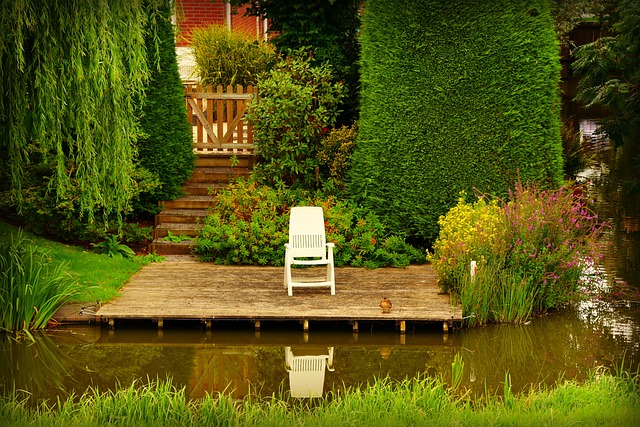Introduction:
Transforming your outdoor space with a DIY patio covering is one of the best ways to extend your living area, allowing you to enjoy the outdoors all year long.
Whether you’re seeking shelter from the sun, rain, or snow, there are a variety of creative options to suit any style, budget, and skill level.
This comprehensive guide offers 12 unique patio covering ideas that range from quick and easy to more advanced DIY projects.
We’ll walk you through the materials you need, detailed steps for installation, and expert tips to ensure a functional and stylish outdoor living space.
12 Creative DIY Patio Coverings for Year-Round Comfort.
1. DIY Pergola: Classic Elegance with Versatility.
A pergola offers a timeless look and provides an excellent balance of sun and shade. With an open framework of beams and rafters, this patio covering is perfect for adding structure and interest to your outdoor space.
Pergolas can be enhanced with climbing plants or a retractable canopy to provide additional protection from the elements.
Step-by-Step Guide to Building a Pergola:
Materials Needed:
- 4×4 wooden posts (or metal beams)
- Rafters and cross beams (wood or metal)
- Concrete mix for securing posts
- Shade cloth or retractable canopy (optional)
Instructions:
- Plan and Measure the Space: Begin by measuring your patio area. Mark where you’ll install the four support posts. Ensure your measurements are precise to avoid alignment issues.
- Dig Post Holes: Dig four holes for the support posts, each around 24 inches deep. Mix the concrete and pour it into the holes to anchor the posts. Allow it to cure for 24-48 hours.
- Install Beams: Once the posts are secured, install the cross beams along the top. These will serve as the main framework of your pergola. Ensure they are evenly spaced for structural stability.
- Attach Rafters: Secure the rafters perpendicular to the beams. These will provide partial shade and serve as a base for additional coverings, like a canopy.
- Finish with a Canopy or Plants: For added comfort, you can install a retractable shade or canopy on top of the rafters, or plant climbing vines such as wisteria or jasmine to grow over time.
Expert Opinion: Landscape architect Lauren Harris notes, “Pergolas are excellent for adding architectural interest to your backyard.
They offer a great balance between shade and light, and with the addition of climbing plants or a canopy, they can be customized to fit your needs.” For more on pergolas, check out The Spruce.
2. Shade Sail: Affordable and Modern.
For a contemporary and budget-friendly DIY patio covering, consider a shade sail. Shade sails provide ample sun protection and can be easily installed by attaching them to existing structures or standalone posts. They’re also highly customizable and come in a variety of colors and shapes to match your outdoor decor.
Step-by-Step Guide to Installing a Shade Sail:
Materials Needed:
- Shade sail fabric (UV-protective)
- Anchoring hardware (turnbuckles, D-rings)
- Support posts or existing structures (house, fence)
Instructions:
- Choose Your Sail Shape: Decide whether you want a triangular, square, or rectangular shade sail. Measure your patio area and choose a sail size that provides adequate coverage.
- Identify Anchor Points: Locate existing structures such as your house, a fence, or trees to anchor the sail. If these aren’t available, install wooden or metal posts where the sail’s corners will be attached.
- Install Anchor Hardware: Drill holes and install D-rings, turnbuckles, or eye bolts on the anchor points. Ensure these are secure to support the weight of the sail.
- Attach the Sail: Stretch the sail over the patio and attach it to the anchor points using turnbuckles or rope. Tighten the sail until it’s taut, ensuring there’s no sagging.
Expert Opinion: According to garden designer John Williamson, “Shade sails offer a sleek and affordable way to create a shaded area.
They’re ideal for smaller patios and can be easily adjusted or removed during the winter months.” Check out more advice from HGTV.
3. Retractable Awning: Stylish and Adjustable
For those who want flexibility, a retractable awning is a perfect choice. These awnings can be extended when you need shade or protection from rain and retracted when you want to enjoy an open-air patio. They can be manual or motorized depending on your budget and preference.
Step-by-Step Guide to Installing a Retractable Awning:
Materials Needed:
- Retractable awning kit
- Drill and mounting brackets
- Measuring tape
- Ladder (for higher installations)
Instructions:
- Measure Your Patio: Determine the size of the awning you need by measuring the width and height of the area to be covered.
- Install Mounting Brackets: Use a drill to install the mounting brackets where the awning will be attached. Make sure they are securely anchored to avoid any mishaps.
- Attach the Awning: With the help of a partner, lift the awning and attach it to the brackets. Ensure it’s level and secure before operating.
- Test the Awning: Extend and retract the awning to ensure smooth operation. If it’s motorized, follow the manufacturer’s instructions for installation and operation.
Expert Opinion: Sarah Collins, a retractable awning specialist, says, “Retractable awnings provide flexibility, allowing you to adjust the shade based on the time of day or season.
They’re a great investment for homeowners who want to enjoy their patio in both sunny and rainy conditions.” Learn more at Bob Vila.
4. Bamboo Roof: Eco-Friendly and Tropical Vibe.
For a natural, tropical aesthetic, a DIY bamboo roof can create a serene outdoor atmosphere. Bamboo is not only a sustainable material but also provides light shade, making your patio feel cooler without blocking too much sunlight.
Step-by-Step Guide to Building a Bamboo Roof:
Materials Needed:
- Bamboo poles (cut to size)
- Wooden beams for framing
- Nylon rope or twine for securing
- Waterproof fabric or tarp (optional, for rain protection)
Instructions:
- Create a Wooden Frame: Build a basic frame using wooden beams. Secure the beams in the ground with concrete or heavy brackets to keep them sturdy.
- Lay the Bamboo Poles: Lay the bamboo poles across the wooden frame, ensuring they are evenly spaced. Use nylon rope or twine to secure the poles to the frame.
- Add Weather Protection: For areas with heavy rain, you can add a layer of waterproof fabric beneath the bamboo to keep the patio dry.
- Finishing Touches: Sand the bamboo poles if necessary to remove rough edges and treat them with a weatherproof finish to prolong their lifespan.
Expert Opinion: Eco-friendly designer Maria Sanchez highlights, “A bamboo roof brings a unique, tropical charm to outdoor spaces.
It’s sustainable and works beautifully with natural materials like wood and stone.” Find more green design ideas at Green Building Advisor.
5. Corrugated Metal Roof: Industrial and Durable.
If you’re after an industrial aesthetic and need a covering that will last, a corrugated metal roof might be the best option.
Corrugated metal is extremely durable, weather-resistant, and low-maintenance. It’s ideal for areas with heavy rainfall or snow.
Step-by-Step Guide to Installing a Corrugated Metal Roof:
Materials Needed:
- Corrugated metal sheets
- Wooden or metal framing
- Screws and washers for fastening
- Power drill and measuring tape
Instructions:
- Measure and Frame the Area: Measure the area you want to cover and build a basic wooden or metal frame for the corrugated sheets to rest on.
- Install the Metal Sheets: Lay the corrugated sheets over the frame, overlapping each sheet slightly to ensure no water gets through. Secure the sheets with screws and washers to prevent movement.
- Seal the Edges: Use silicone sealant or flashing tape to seal any gaps between the sheets and the edges of your home or patio structure.
- Optional Insulation: For added comfort in colder climates, you can install insulation beneath the corrugated metal to maintain a stable temperature on your patio.
Expert Opinion: Construction expert Mike Davis explains, “A corrugated metal roof is one of the most durable options for patios.
It’s designed to withstand harsh weather and is relatively easy to install.” For more information, visit Family Handyman.
6. Lattice Panels: Stylish Shade.
For those who prefer a balance of sun and shade, lattice panels are an excellent choice. They provide partial shade while allowing airflow and sunlight to filter through.
Lattice panels are also perfect for growing climbing plants that can enhance the patio’s natural appeal.
Step-by-Step Guide to Installing Lattice Panels:
Materials Needed:
- Wooden or vinyl lattice panels
- Nails or screws for installation
- Wooden posts for support
- Climbing plants (optional)
Instructions:
- Install Support Posts: Begin by installing wooden or metal posts to serve as the frame for your lattice panels. Make sure they’re firmly secured in the ground.
- Attach the Lattice Panels: Use nails or screws to attach the lattice panels to the support posts. Ensure they are evenly spaced and secure.
- Add Climbing Plants: Plant climbing plants like ivy or jasmine at the base of the lattice. Over time, these plants will grow and provide additional shade.
Expert Opinion: Garden designer Jenny Carter notes, “Lattice panels offer a stylish and functional way to enhance your patio space.
Paired with the right plants, they create a natural, living wall that changes with the seasons.” More ideas are available at Better Homes & Gardens.
7. Outdoor Curtains: Elegant and Flexible.
For a soft and elegant touch, outdoor curtains are an excellent choice. These curtains can be drawn for privacy and sun protection, or tied back to let in more light and air. They also add a cozy, cabana-like feel to any patio.
Step-by-Step Guide to Installing Outdoor Curtains:
Materials Needed:
- Outdoor curtain fabric (UV-resistant)
- Curtain rods or cables
- Mounting brackets
Instructions:
- Install Curtain Rods: Mount the curtain rods or cables along the edges of your patio. Make sure the hardware is strong enough to support the weight of the curtains.
- Hang the Curtains: Thread the outdoor curtains onto the rods and install them. Choose UV-resistant and waterproof fabric to ensure longevity.
- Tiebacks and Finishing Touches: Install tiebacks to secure the curtains when they’re open. Choose tiebacks that complement your outdoor decor.
Expert Opinion: Interior designer Lisa Adams says, “Outdoor curtains are a simple yet effective way to add privacy and elegance to your patio.
They also provide flexible shading options for changing weather conditions.” More outdoor decor tips can be found at Elle Decor.
Conclusion.
With these 12 DIY patio covering ideas, you’re sure to find the perfect solution to suit your outdoor needs,
Whether you’re looking for sun protection, rain shelter, or just a cozy space to unwind. From elegant pergolas to affordable shade sails, each option offers unique benefits that can be tailored to your personal style and budget.
By following these step-by-step guides, you can create a stylish and comfortable outdoor space that you can enjoy all year round.
Frequently Asked Questions.
Q: What is the easiest DIY patio covering to install?
A: Shade sails and outdoor curtains are the easiest DIY patio coverings to install. They require minimal tools and can be set up in a few hours.
Q: Can I use a pergola in all weather conditions?
A: Pergolas provide partial shade and are best suited for mild weather. To make them suitable for rain or snow, you can add a retractable canopy or waterproof cover.
Q: How much does it cost to build a DIY patio covering?
A: The cost varies depending on the materials used. A simple shade sail might cost around $100, while a more elaborate pergola or metal roof could range from $500 to $3,000.
Q: What materials are best for a year-round patio covering?
A: For year-round durability, consider using materials like metal, polycarbonate, or treated wood that can withstand various weather conditions.
























